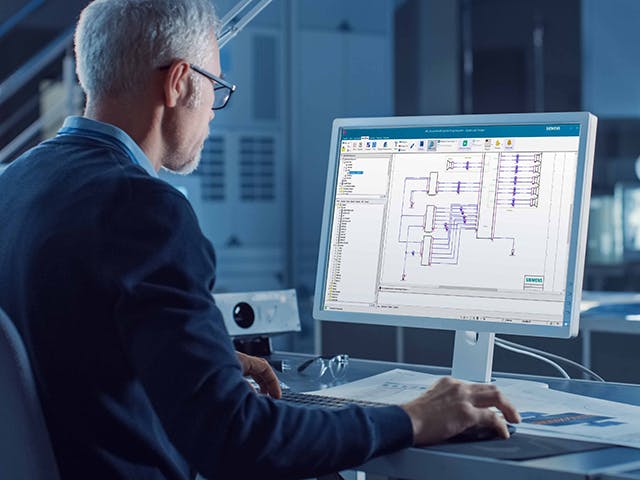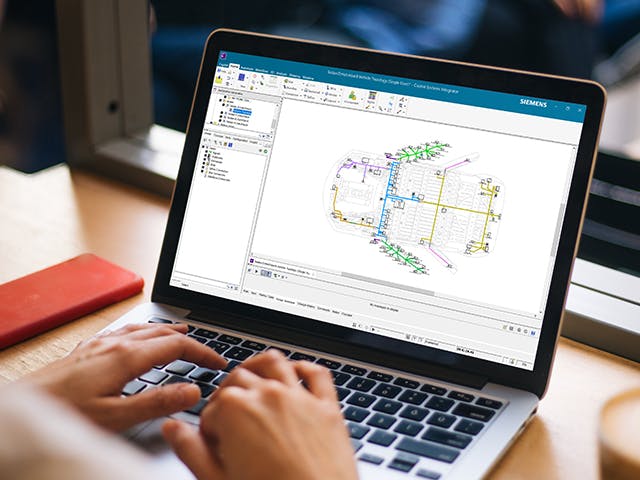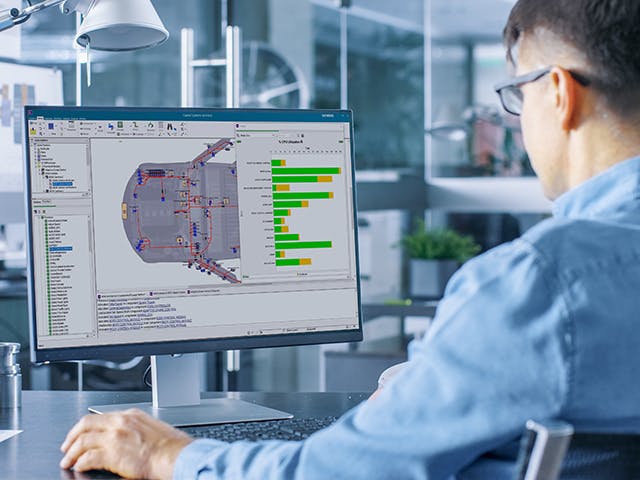
Optimize electrical system designs
Electrical optimization and verification
Engineers need to create manufacturing-ready harness designs rapidly and easily. Perform analysis and verification of designs within the tools with advanced metrics. Also use built-in design rule checks.
Electrical systems design and simulation
You need a solution that has a powerful graphical editing environment coupled with advanced design-management capabilities. Use Capital to create schematic designs either interactively or with automatic diagram generation.
Electrical systems integration
Remove a huge part of the system integration task with generative design – a breakthrough in the automation of electrical systems integration. Save time and improve quality, leaving you free to innovate.
Create and assess electrical designs for efficiency
Capital electrical systems engineering solutions empower engineers to author logical and physical connectivity in one environment. Augment traditional interactive design with an integrated platform view, and use generative design to automatically synthesize and verify the wiring configurations.
Electrical systems design and simulation
Engineers need a solution that has a powerful graphical editing environment coupled with advanced design-management capabilities. This enables users to construct intelligently connected logical systems designs (signals or highway connectivity) or build complete physical wiring systems (wires, splices, multi-cores, etc.).
Using Capital, it's possible to create logical and wiring schematic designs interactively or with automatic diagram generation. It is used to design and integrate electrical sub-systems; for example, the merging of multiple sub-systems into the physical structure. It is also used to synthesize electrical and electronics (E/E) platform implementations to optimize cost, weight and complexity. All designs are supported by industry-leading design rule checking, metrics analysis and reporting capabilities.
Electrical systems integration and implementation
Today's electrical systems are incredibly complex from both a product and a variation perspective. To manage this, engineers need highly automated solutions to help them understand the implications of design choices to provide them confidence in their designs. A key approach is generative design – a breakthrough in the automation of electrical systems integration.
Capital automatically merges sub-system signal connectivity with physical topology to generate fully-detailed vehicle wiring designs. This removes a huge part of the system integration task, saving time, improving quality, and leaving engineers free to innovate and investigate a wide range of physical architectures to determine the optimum layout.
Electrical optimization and verification
Engineers need to create fully detailed, validated and manufacturing-ready harness designs rapidly and easily. Before the designs reach manufacturing plants, it's necessary to ensure they are 'correct-by-construction' to minimize quality and manufacturability issues. Electrical faults have an impact on the success or failure of a product in the market. Simulation and analysis play a key role in the early validation of the electrical system – where redesign is cheaper and easier.
Simplicity and ease-of-use are key features of our simulation and analysis solutions, bringing design verification capabilities into the hands of every electrical designer. Capital enables engineers to analyze and verify their designs within the tools with advanced metrics and built-in design rule checks. Verification and analysis tools allow you to confirm design correctness before harnesses are built. This enables complete electrical design validation, coupled with automated certification and reporting.






